1. The Minnesota State Fair’s “On-a-Stick” Obsession
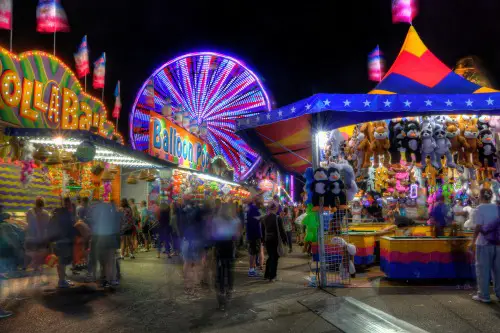
In Minnesota, the State Fair isn’t just an event—it’s practically a personality trait, according to Mark Olson from Pioneer Press. Locals take pride in the endless variety of foods served “on a stick,” from classics like corn dogs to quirky offerings like deep-fried olives or spaghetti. The phrase “on a stick” has become a running joke and badge of honor for fairgoers and vendors alike. For many Minnesotans, it’s not really the end of summer until you’ve eaten something fried and skewered.
This tradition reflects the state’s proud agricultural heritage and hearty Midwestern appetite. It’s more than just novelty food—it’s about celebrating creativity and community. Fair vendors compete to outdo one another every year, and locals have passionate opinions on their favorites. Even if you’re a visitor, you’ll quickly learn that choosing the right “on-a-stick” snack is a big deal.
2. New Orleans’ Mardi Gras Ladder Tradition

Everyone knows Mardi Gras is huge in New Orleans, but not everyone knows about the decorated ladders with built-in seats, according to Erin Cavoto from Country Living Magazine. These custom contraptions are used to elevate kids above the crowd during parades so they can catch beads and trinkets. Families decorate them elaborately, often with purple, green, and gold, and start claiming their parade-watching spots early. It’s a blend of ingenuity, practicality, and flair that screams New Orleans.
The ladders aren’t just functional—they’re cherished family heirlooms in some cases. They mark territory in an otherwise chaotic environment, making it feel more like a neighborhood block party than a wild street event. To locals, seeing rows of these festive ladders is just part of the scene. Outsiders might be baffled, but for native New Orleanians, it’s a must-have setup.
3. Groundhog Day in Punxsutawney, Pennsylvania
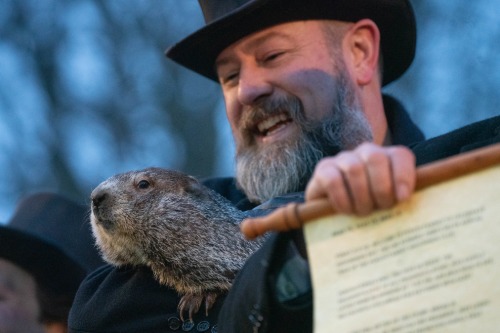
Groundhog Day might be a nationally known event, but no one does it like Punxsutawney, according to Bill Chappell from NPR. Every February 2nd, locals gather at Gobbler’s Knob to watch Punxsutawney Phil emerge and predict the weather. There’s a whole ceremony led by top-hatted “Inner Circle” members, complete with scripted proclamations. It’s a peculiar mix of folklore, small-town theater, and chilly devotion.
The town goes all-in on this tradition, with parties, merchandise, and even Groundhog-themed beer. It might seem silly from the outside, but for residents, it’s a unifying ritual. People make the trek in the early morning hours, often braving sub-zero temperatures. To them, Phil is a celebrity—and his shadow is serious business.
4. Vermont’s “Leaf Peeping” Ritual
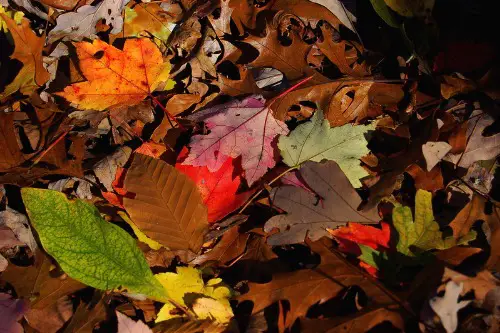
When fall hits Vermont, locals brace for “leaf peeping” season, according to Kristi Palma from Boston.com. While it might sound like a passive activity, it’s anything but. Residents plan weekend drives, share foliage maps, and debate over which scenic route is peaking. It’s such a part of local culture that some Vermonters have favorite trees they revisit annually.
Tourists flock in droves, but the locals know the backroads and secret spots. There’s an art to timing it just right—too early and the colors haven’t peaked, too late and the leaves are gone. For Vermonters, it’s a fleeting moment of natural beauty that defines autumn. Outsiders might appreciate the views, but locals treat it like a sacred annual pilgrimage.
5. Texas Homecoming Mums
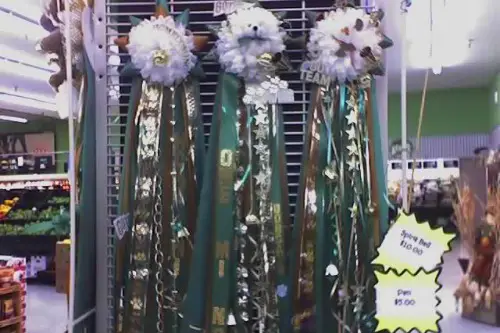
If you didn’t grow up in Texas, the size and spectacle of high school homecoming mums might leave you speechless. These over-the-top floral creations—often adorned with bells, ribbons, lights, and stuffed animals—are worn by students as badges of honor. Some are so big they require harnesses to keep upright. It’s a uniquely Texan twist on school spirit.
The tradition has evolved far beyond its original corsage roots. Students (and their parents) often spend hundreds crafting or buying the perfect mum. It’s a rite of passage, especially for girls, and a point of pride in many communities. Non-Texans might see them as absurd, but for locals, it’s all part of the show.
6. The Blessing of the Fleet in Georgia
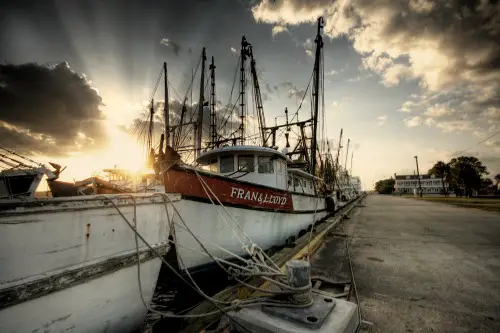
In coastal Georgia towns like Darien, the annual Blessing of the Fleet is a deep-rooted tradition. It honors local shrimpers and fishermen, asking for safety and abundance during the season ahead. Boats are paraded, clergy offer blessings, and the community gathers for music and seafood. It’s a mix of religious ceremony and Southern hospitality.
This event dates back to the 1930s and ties closely to the area’s economic and cultural identity. Shrimping isn’t just a job here—it’s a generational lifestyle. The blessing is both symbolic and heartfelt, reflecting the community’s dependence on the water. To an outsider, it might seem quaint, but to locals, it’s as serious as Sunday church.
7. The “Frozen Dead Guy Days” Festival in Colorado
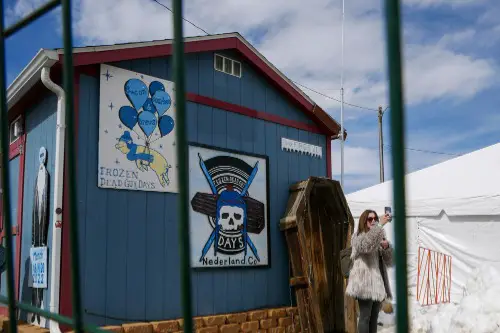
In Nederland, Colorado, locals celebrate a cryogenically frozen man with a festival called “Frozen Dead Guy Days.” Yes, really—his name is Bredo Morstøl, and his body is stored in a Tuff Shed on dry ice. The festival includes coffin races, frozen T-shirt contests, and a polar plunge. It’s morbid, hilarious, and very, very local.
This bizarre event started in the 1990s after the town discovered Bredo’s body had been stored illegally. Instead of shying away, Nederland leaned into the weirdness. It’s become a beloved annual event drawing thousands, with locals proudly embracing the offbeat legacy. It’s a reminder that even the strangest stories can build community.
8. Devil’s Night in Detroit
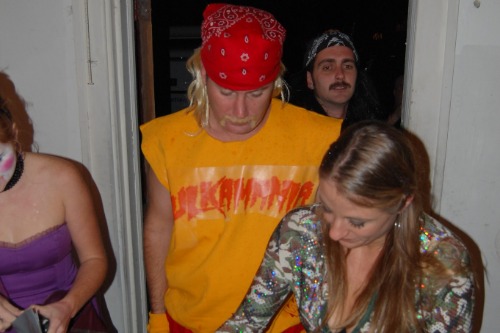
On the night before Halloween, Detroit has long observed something called Devil’s Night. Historically, this was a night when mischief and vandalism—particularly arson—spiked across the city. In the 1980s and ’90s, it got so bad that hundreds of fires would be reported in a single night. It was a terrifying and uniquely local crisis.
But in the early 2000s, community groups began reclaiming the night by organizing patrols and events under the banner of “Angel’s Night.” Residents now volunteer in droves to keep their neighborhoods safe and clean. It’s become a symbol of Detroit’s resilience and reinvention. While most cities prep for Halloween, Detroit takes the 30th just as seriously.
9. Oyster Dressing at Thanksgiving in the South
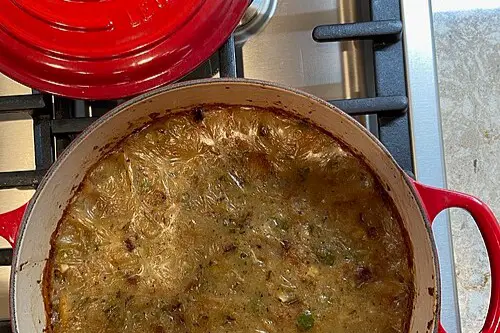
In parts of the Gulf Coast and Lowcountry South, Thanksgiving dinner includes something a bit unexpected: oyster dressing. This savory side dish swaps the usual cornbread-and-sausage combination for oysters, often fresh from local waters. For families in Louisiana, Mississippi, and South Carolina, it’s as traditional as turkey. The briny flavor brings a coastal twist to the holiday table.
This dish speaks to the region’s seafood-rich culture and French-Creole culinary influences. Recipes are often passed down for generations, fiercely protected and hotly debated. It might surprise a visitor, but for locals, it’s a must-have. Without it, Thanksgiving just doesn’t taste quite right.
10. The Polar Bear Plunge in Maryland

Every New Year’s Day, brave souls in Maryland dash into the icy waters of the Chesapeake Bay for the Polar Bear Plunge. It’s a bone-chilling tradition, and most participants do it in costume. While there are similar events across the country, the Maryland version raises millions annually for Special Olympics. That mix of heart, hilarity, and hypothermia makes it uniquely meaningful.
Locals train for it, cheer each other on, and even tailgate before the plunge. For many, it’s a way to start the year with courage and charity. It’s messy, loud, and unforgettable. Visitors might question their sanity—but for Marylanders, it’s a badge of honor.
11. Clam Shucking Contests in Maine
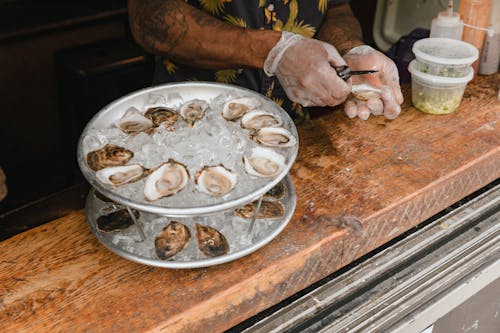
Maine is known for lobsters, but clams are where the real competition lies. Local festivals often include clam shucking contests where speed and precision matter. Participants wear gloves and use specialized knives to pry open as many clams as possible in a timed showdown. It’s intense, salty, and deeply rooted in the region’s shellfishing heritage.
These contests are more than entertainment—they showcase a skill that’s essential in coastal Maine communities. Many competitors are actual clam diggers by trade, bringing real-world expertise to the stage. The bragging rights are huge, and the camaraderie runs deep. Outsiders might see a seafood stunt, but locals see craft and pride.
12. Turtle Races in Minnesota Bars
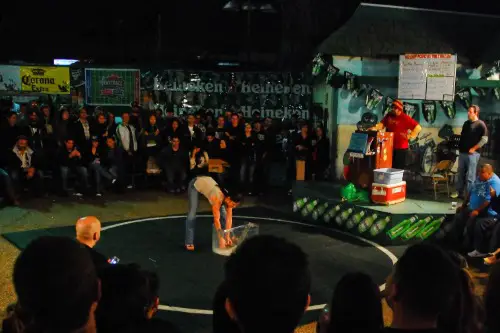
In some small Minnesota towns, you’ll find a surprising bar tradition: turtle races. Real turtles are lined up and placed in the center of a ring, and whoever’s turtle reaches the edge first wins. It’s slow, silly, and completely earnest. Many bars even have leaderboards and weekly tournaments during summer.
These events often raise money for charity and bring entire communities together. Locals name their turtles, train them (sort of), and cheer like it’s the Super Bowl. It’s a far cry from high-stakes gambling, but the enthusiasm is very real. To outsiders, it might seem bizarre—but for Minnesotans, it’s just another way to celebrate summer.


